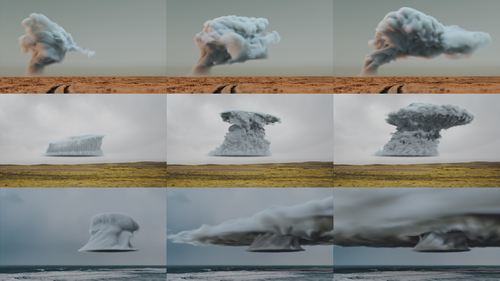Pre-recorded Sessions: From 4 December 2020 | Live Sessions: 10 – 13 December 2020
4 – 13 December 2020
Pre-recorded Sessions: From 4 December 2020 | Live Sessions: 10 – 13 December 2020
4 – 13 December 2020
#SIGGRAPHAsia | #SIGGRAPHAsia2020
#SIGGRAPHAsia | #SIGGRAPHAsia2020











Date: Friday, December 11th
Time: 1:30pm - 2:00pm
Venue: Zoom Room 9
Note: All live sessions will be screened on Singapore Time/GMT+8. Convert your time zone here.
Abstract: We devise a novel surface-only approach for simulating the three dimensional free-surface flow of incompressible, inviscid, and linearly magnetizable ferrofluids. A Lagrangian velocity field is stored on a triangle mesh capturing the fluid's surface. The two key problems associated with the dynamic simulation of the fluid's interesting geometry are the magnetization process transitioning the fluid from a non-magnetic into a magnetic material, and the evaluation of magnetic forces. In this regard, our key observation is that for linearly incompressible ferrofluids, their magnetization and application of magnetic forces only require knowledge about the position of the fluids' boundary. Consequently, our approach employs a boundary element method solving the magnetization problem and evaluating the so-called magnetic pressure required for the force evaluation. The magnetic pressure is added to the Dirichlet boundary condition of a surface-only liquids solver carrying out the dynamical simulation. By only considering the fluid's surface in contrast to its whole volume, we end up with an efficient approach enabling more complex and realistic ferrofluids to be explored in the digital domain without compromising efficiency. Our approach allows for the use of physical parameters leading to accurate simulations as demonstrated in qualitative and quantitative evaluations.
Author(s)/Presenter(s):
Libo Huang, KAUST, Saudi Arabia
Dominik L. Michels, KAUST, Saudi Arabia
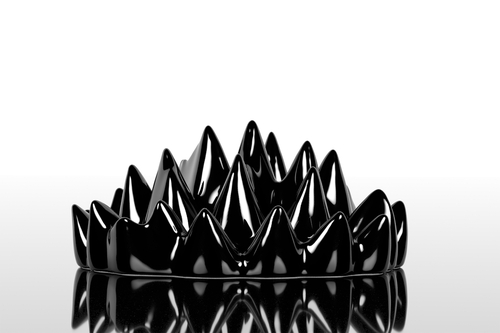
Abstract: In physically based-based animation, pure particle methods are popular due to their simple data structure, easy implementation, and convenient parallelization. As a pure particle-based method and using Galerkin discretization, the Moving Least Square Reproducing Kernel Method (MLSRK) was developed in engineering computation as a general numerical tool for solving PDEs. The basic idea of Moving Least Square (MLS) has also been used in computer graphics to estimate deformation gradient for deformable solids. Based on these previous studies, we propose a multiphase MLSRK framework that animates complex and coupled fluids and solids in a unified manner. Specifically, we use the Cauchy momentum equation and phase field model to uniformly capture the momentum balance and phase evolution/interaction in a multiphase system, and systematically formulate the MLSRK discretization to support general multiphase constitutive models. A series of animation examples are presented to demonstrate the performance of our new multiphase MLSRK framework, including hyperelastic, elastoplastic, viscous, fracturing and multiphase coupling behaviours etc.
Author(s)/Presenter(s):
Xiaosong Chen, Tsinghua University, China
Chenfeng Li, Swansea University, United Kingdom
Gengchen Cao, Tsinghua University, China
Yuntao Jiang, Tsinghua University, China
Shi-Min Hu, Tsinghua University, China
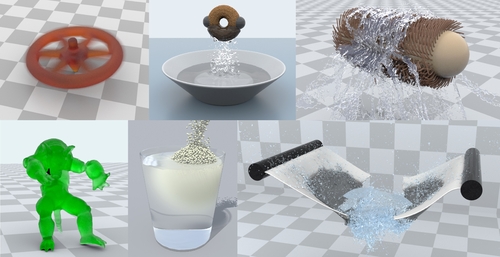
Abstract: Glaciers are some of the most visually arresting and scenic elements of cold regions and high mountain landscapes. Although snow-covered terrains have already received interest from computer graphics, simulating the temporal evolution of glaciers as well as modeling their wide range of features has never been addressed. In this paper, we present a Shallow Ice Approximation model combined with a procedural amplification process to author high-resolution realistic glaciers. Our multiresolution method allows the interactive simulation of the formation and the evolution of glaciers over hundreds of years. The user can easily modify the environment variables, such as the average temperature or precipitation rate, to control the glacier growth, or directly use brushes to sculpt the ice or bedrock with interactive feedback provided by the simulation loop. Mesoscale and smallscale landforms that are not captured by the glacier simulation, such as crevasses, moraines, seracs, ogives, or icefalls are synthesized using procedural rules inspired by observations in glaciology and according to the physical parameters derived from the simulation. Our method lends itself to seamless integration into production pipelines to decorate reliefs with glaciers and realistic ice features.
Author(s)/Presenter(s):
Oscar Argudo, Univ Lyon, CNRS, LIRIS, France
Eric Galin, Univ Lyon, CNRS, LIRIS, France
Adrien Peytavie, Univ Lyon, CNRS, LIRIS, France
Axel Paris, Univ Lyon, CNRS, LIRIS, France
Eric Guérin, Univ Lyon, INSA-Lyon, CNRS, LIRIS, France
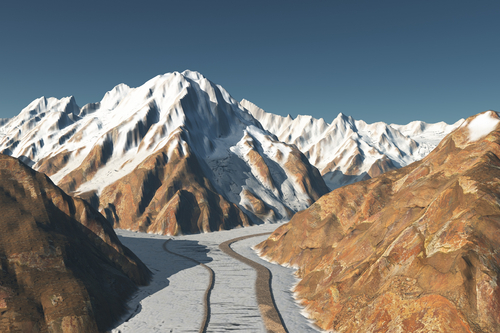
Abstract: We introduce the C-F diffusion model [Anderson and Tamma 2006; Xue et al. 2018] to computer graphics for diffusion-driven problems that has several attractive properties: (a) it fundamentally explains diffusion from the perspective of the non-equilibrium statistical mechanical Boltzmann Transport Equation, (b) it allows for a finite propagation speed for diffusion, in contrast to the widely employed Fick's/Fourier's law, and (c) it can capture some of the most characteristic visual aspects of diffusion-driven physics, such as hydrogel swelling, limited diffusive domain for smoke flow, snowflake and dendrite formation, that span from Fourier-type to non-Fourier-type diffusive phenomena. We propose a unified convection-diffusion formulation using this model that treats both the diffusive quantity and its associated flux as the primary unknowns, and that recovers the traditional Fourier-type diffusion as a limiting case. We design a novel semi-implicit discretization for this formulation on staggered MAC grids and a geometric Multigrid-preconditioned Conjugate Gradients solver for efficient numerical solution. To highlight the efficacy of our method, we demonstrate end-to-end examples of elastic porous media simulated with the Material Point Method (MPM), and diffusion-driven Eulerian incompressible fluids.
Author(s)/Presenter(s):
Tao Xue, Rutgers University, United States of America
Haozhe Su, Rutgers University, United States of America
Chengguizi Han, Rutgers University, United States of America
Chenfanfu Jiang, University of Pennsylvania, United States of America
Mridul Aanjaneya, Rutgers University, United States of America
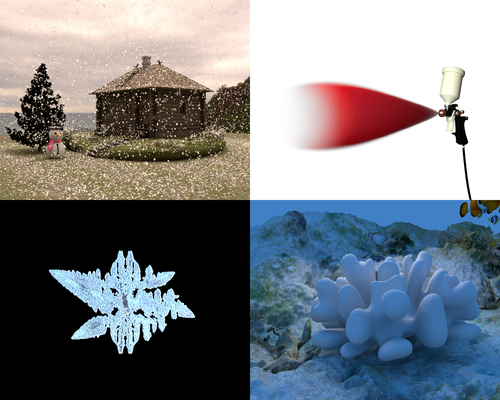
Abstract: The complex interplay of a number of physical and meteorological phenomena makes simulating clouds a challenging and open research problem. We explore a physically accurate model for simulating clouds and the dynamics of their transitions. We propose first-principle formulations for computing buoyancy and air pressure that allow us to simulate the variations of atmospheric density and varying temperature gradients. Our simulation allows us to model various cloud types, such as cumulus, stratus, and stratoscumulus, and their realistic formations caused by changes in the atmosphere. Moreover, we are able to simulate large-scale cloud super cells – clusters of cumulonimbus formations – that are commonly present during thunderstorms. To enable the efficient exploration of these stormscapes, we propose a lightweight set of high-level parameters that allow us to intuitively explore cloud formations and dynamics. Our method allows us to simulate cloud formations of up to about 20km × 20km extents at interactive rates. We explore the capabilities of physically accurate and yet interactive cloud simulations by showing numerous examples and by coupling our model with atmosphere measurements of real-time weather services to simulate cloud formations in the now. Finally, we quantitatively assess our model with cloud fraction profiles, a common measure for comparing cloud types.
Author(s)/Presenter(s):
Torsten Hädrich, KAUST, Saudi Arabia
Miłosz Makowski, UAM, Poland
Wojtek Pałubicki, UAM, Poland
Daniel T. Banuti, UNM, United States of America
Sören Pirk, Google AI, United States of America
Dominik L. Michels, KAUST, Saudi Arabia
